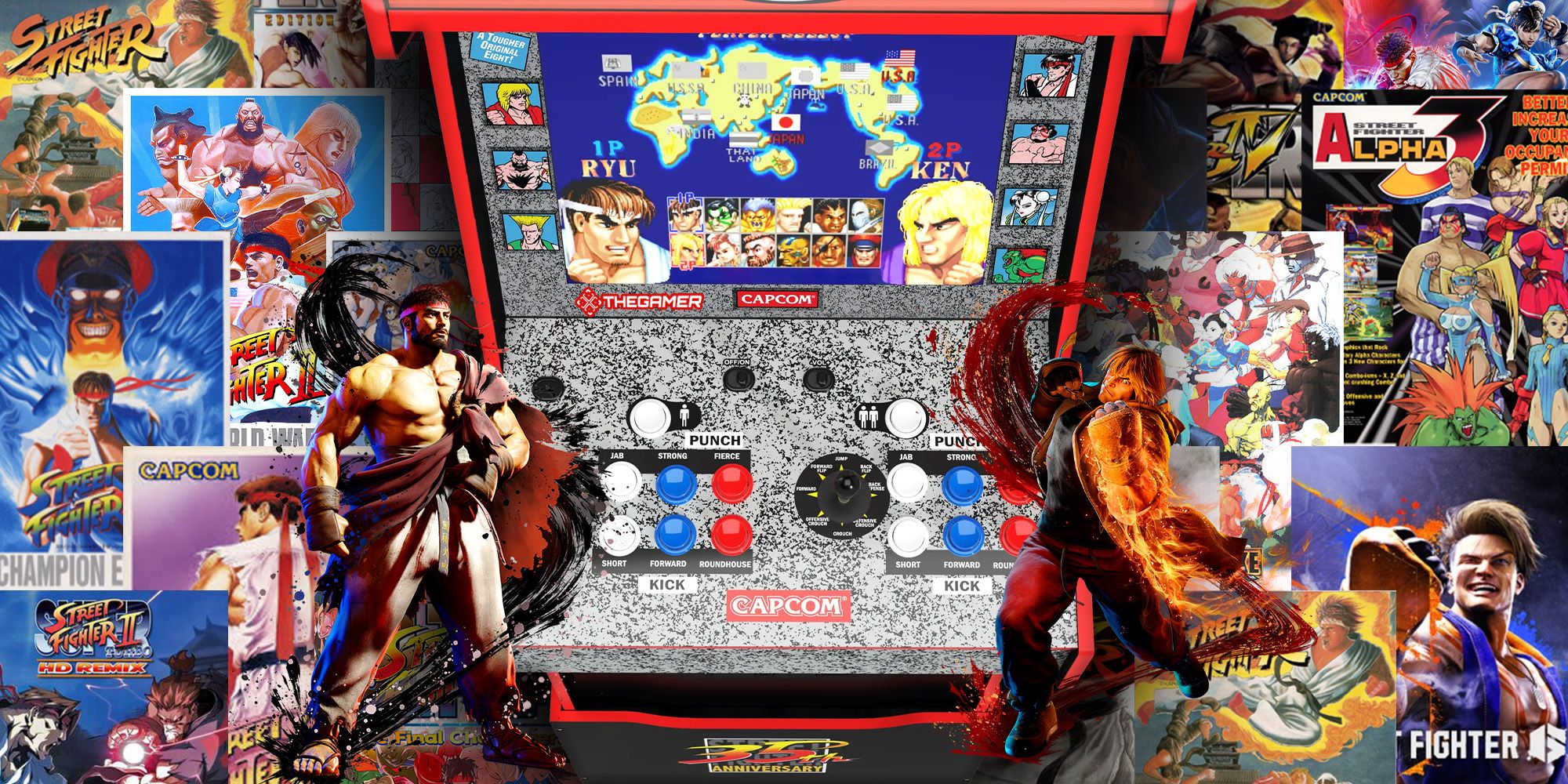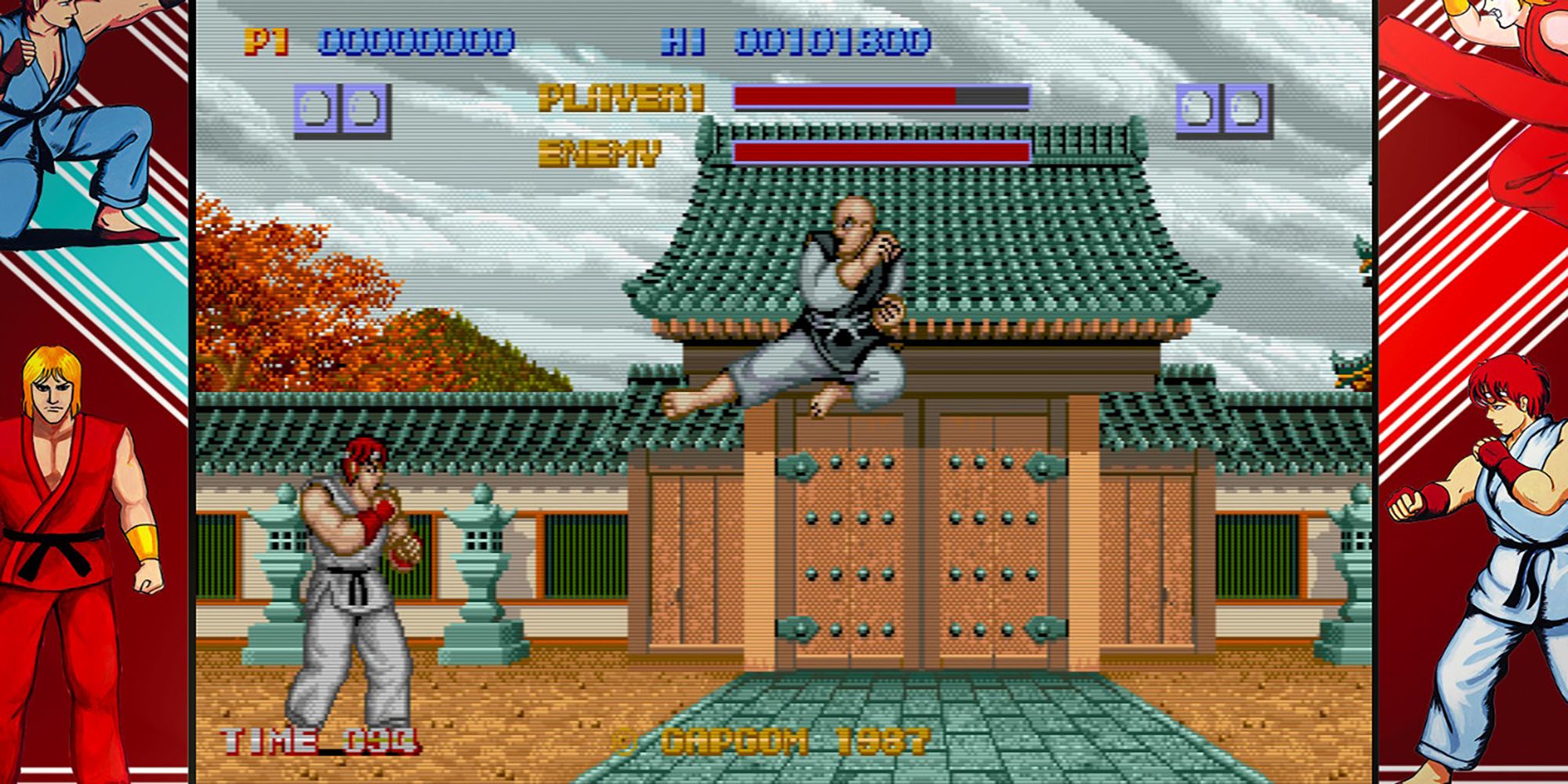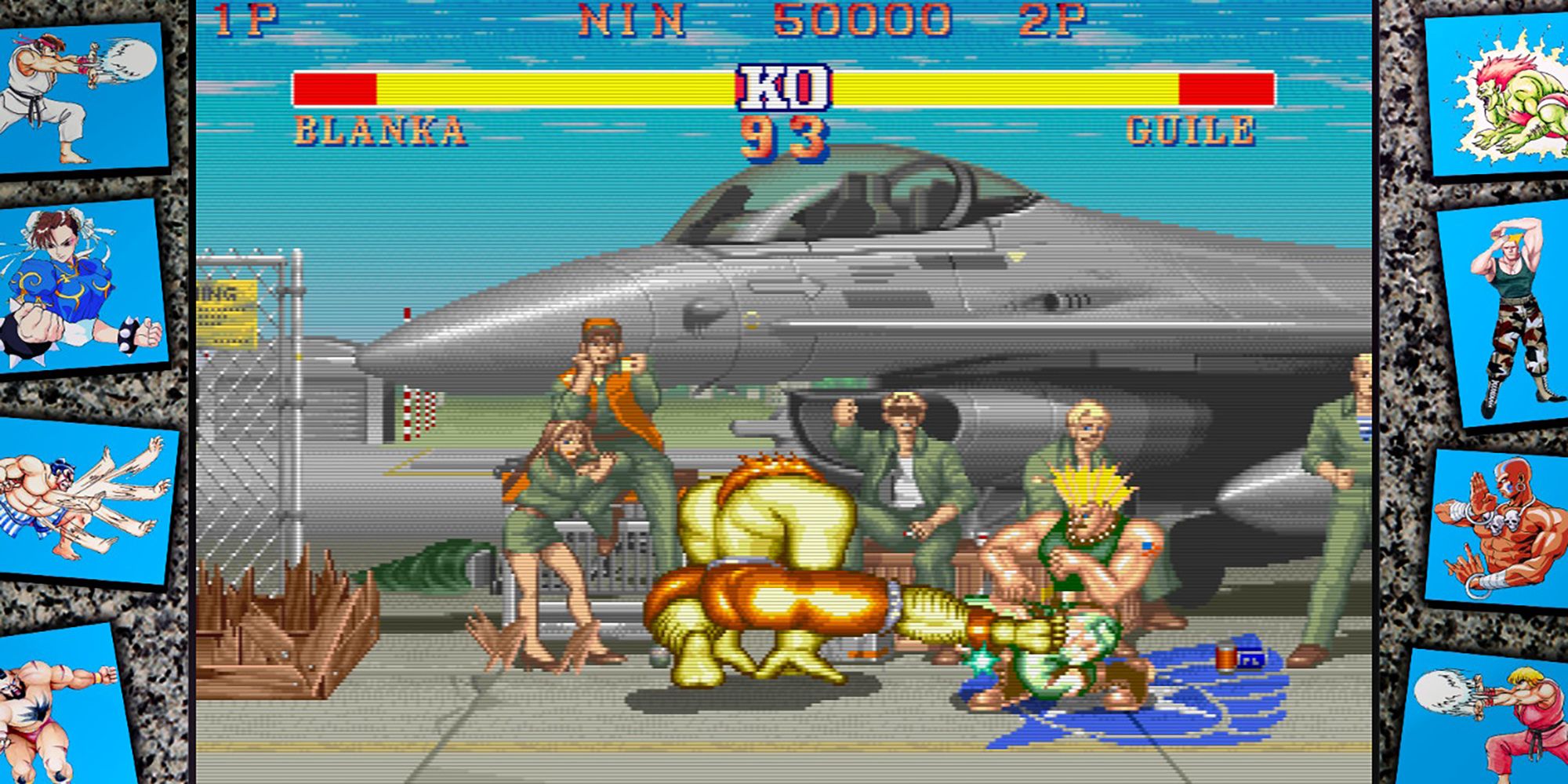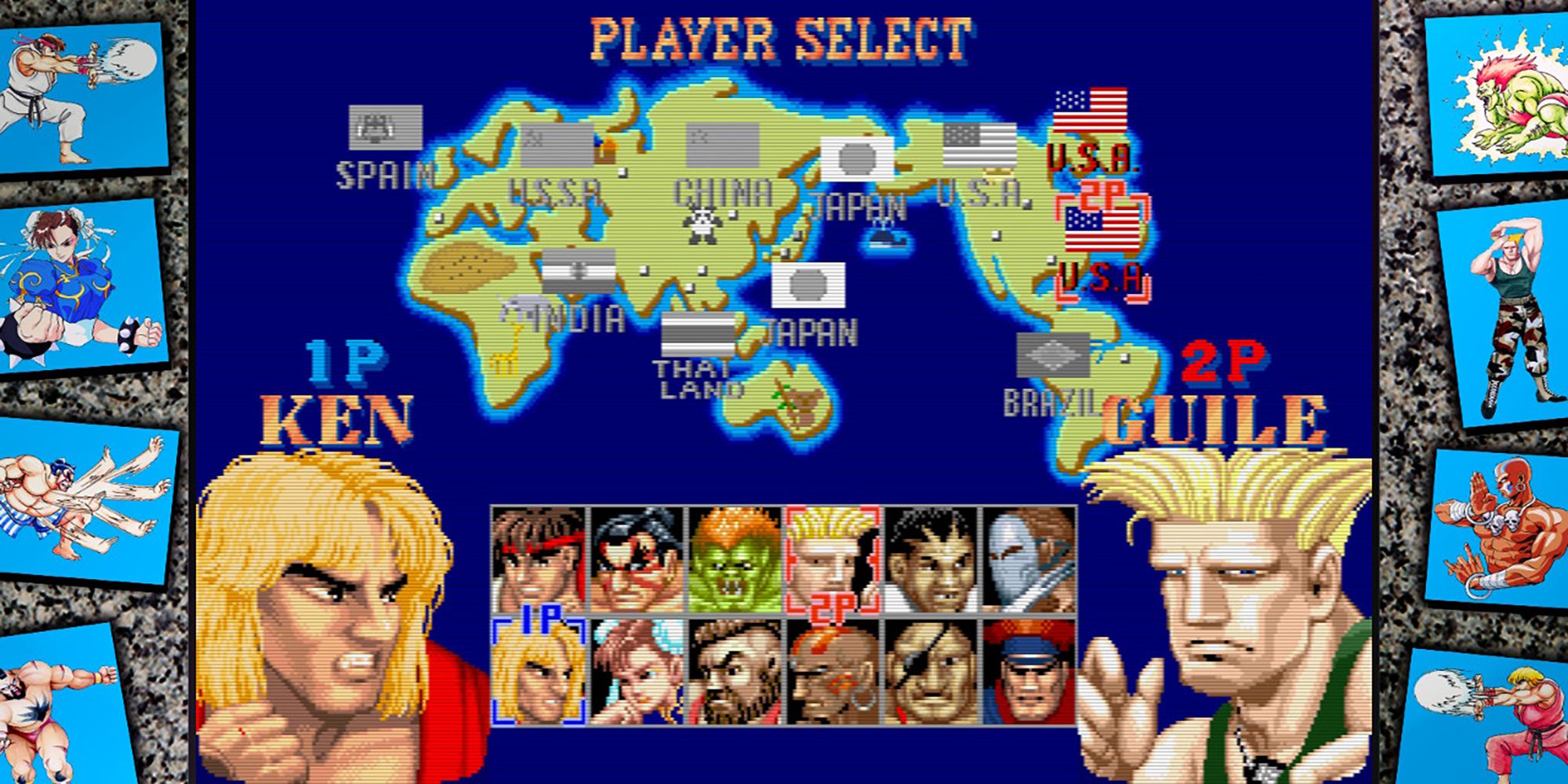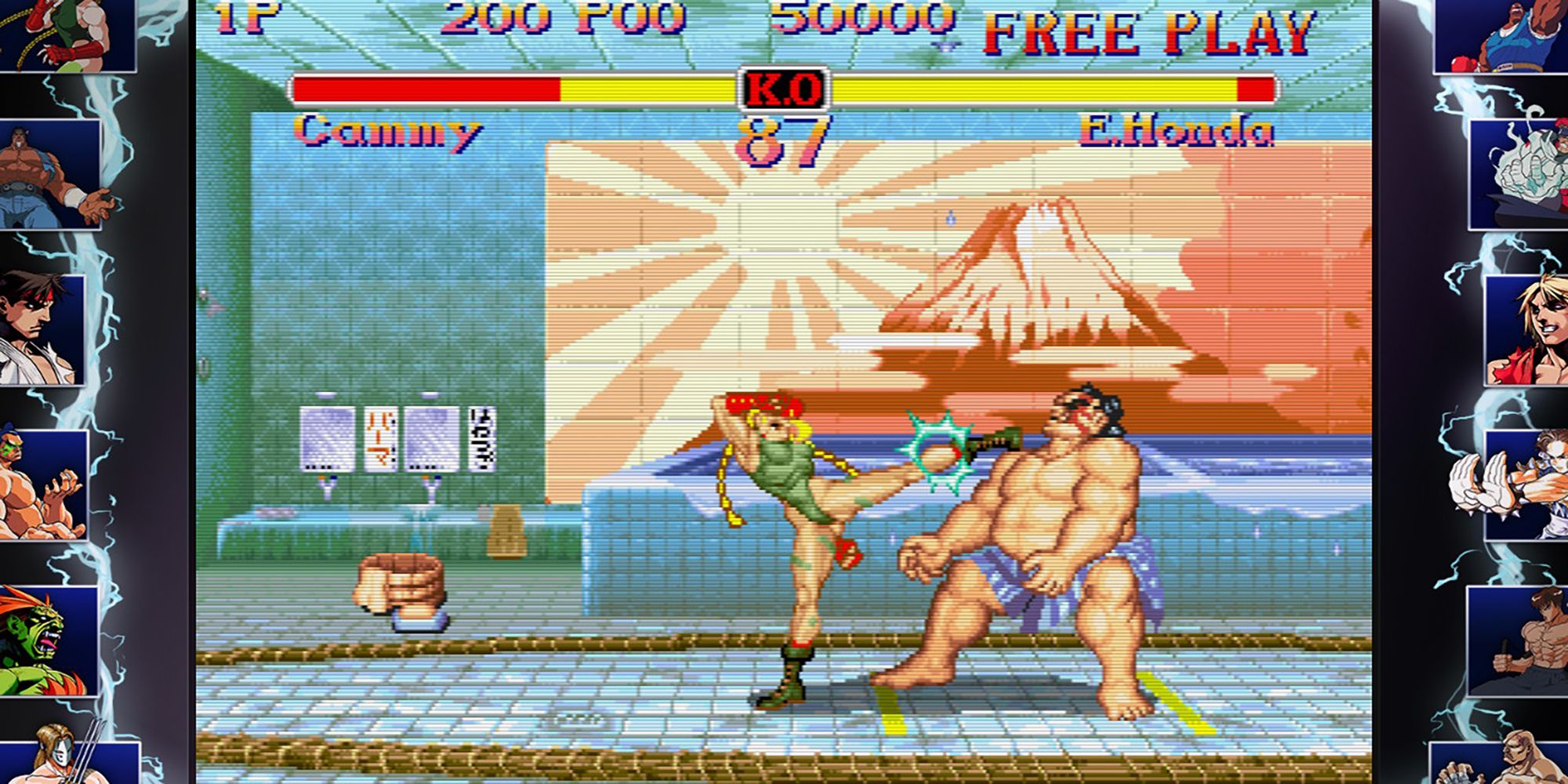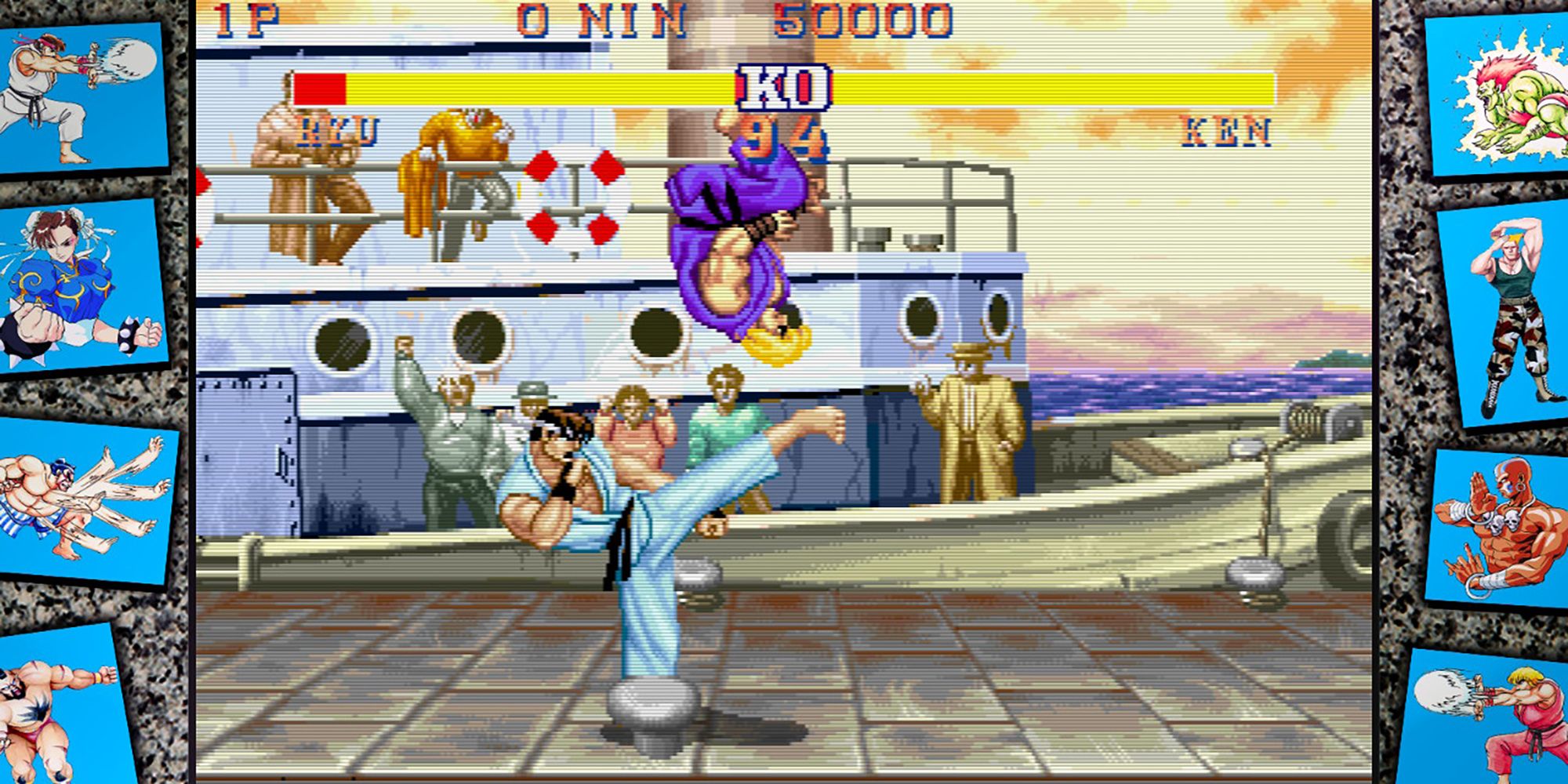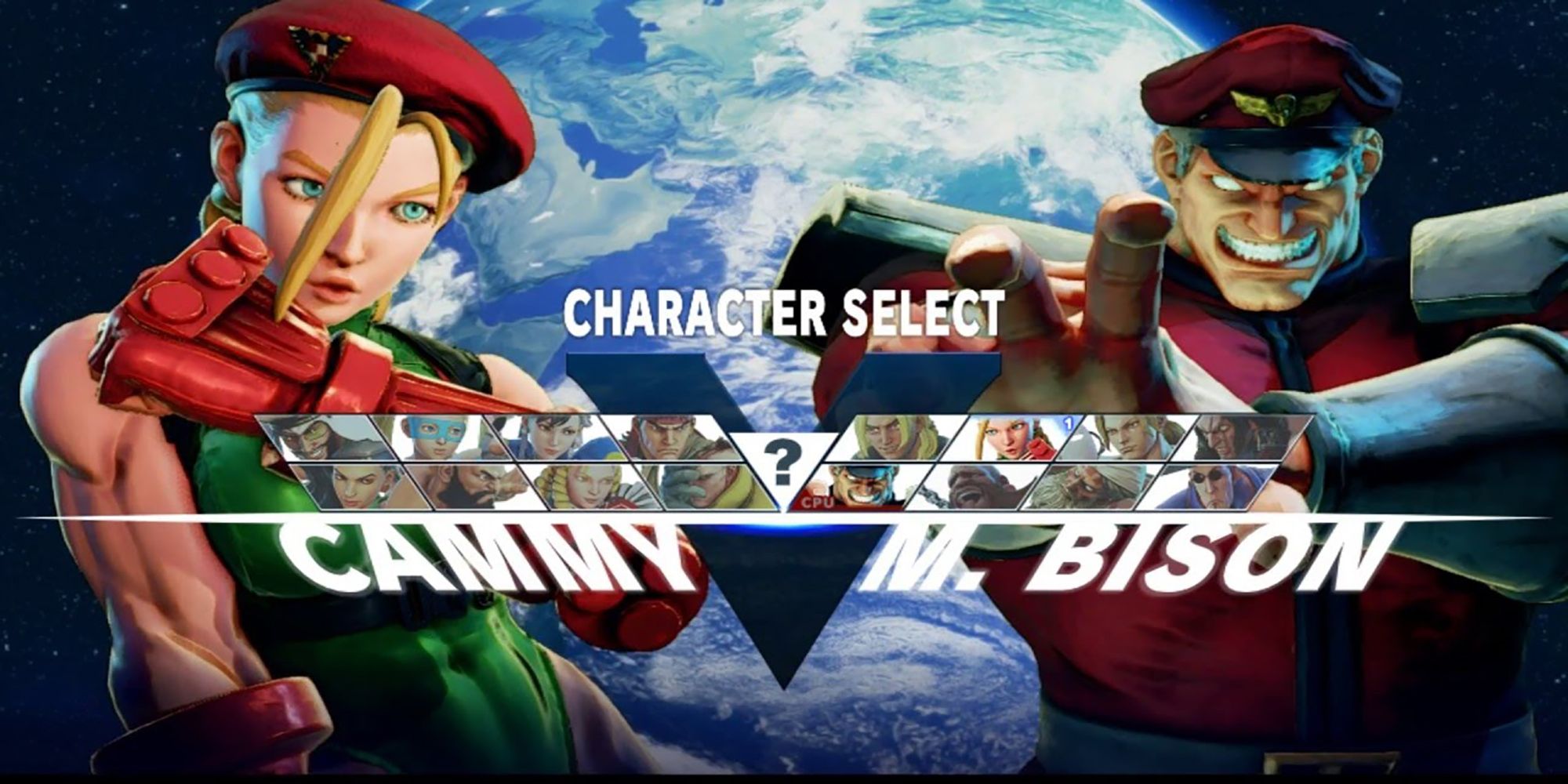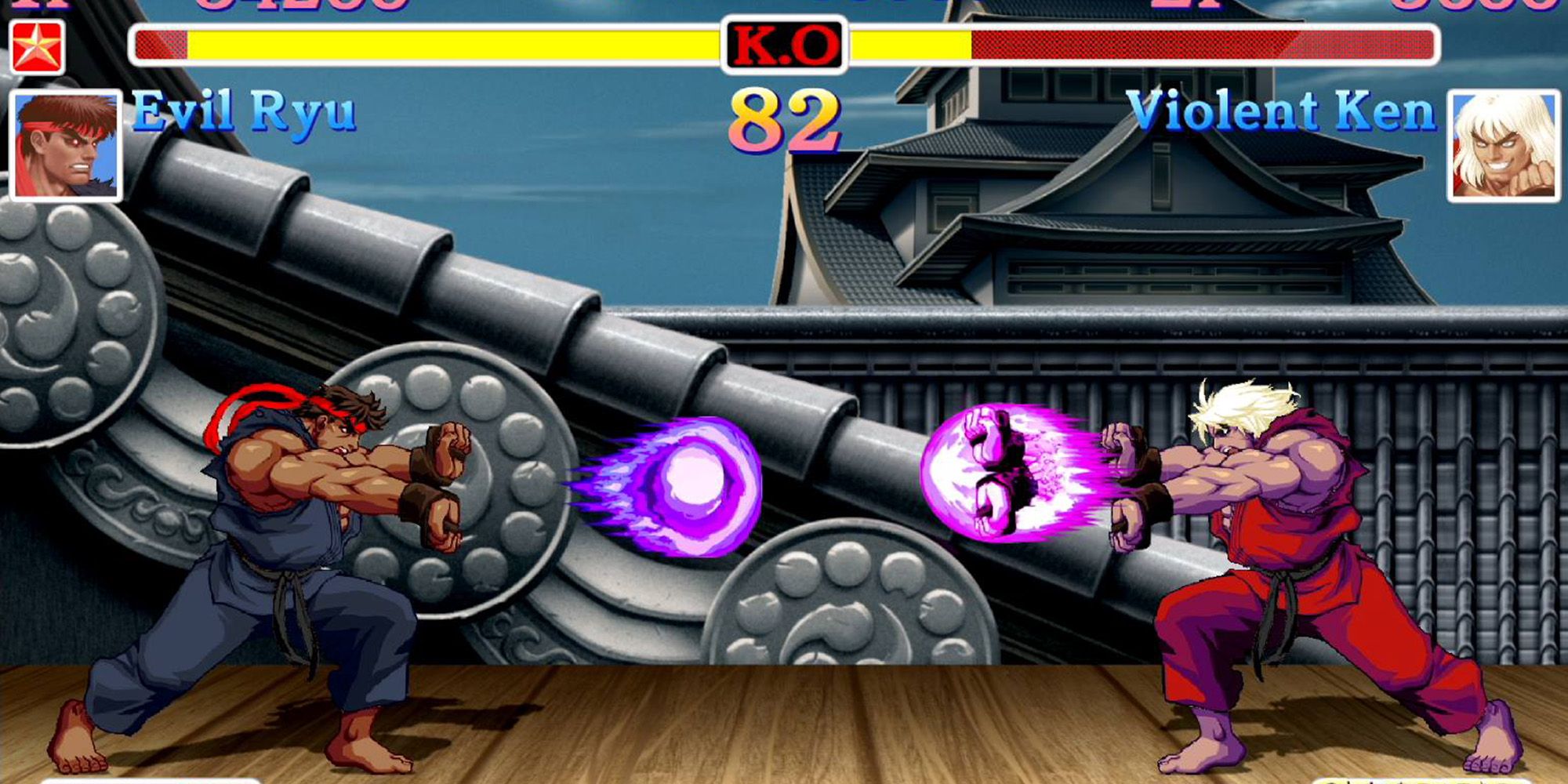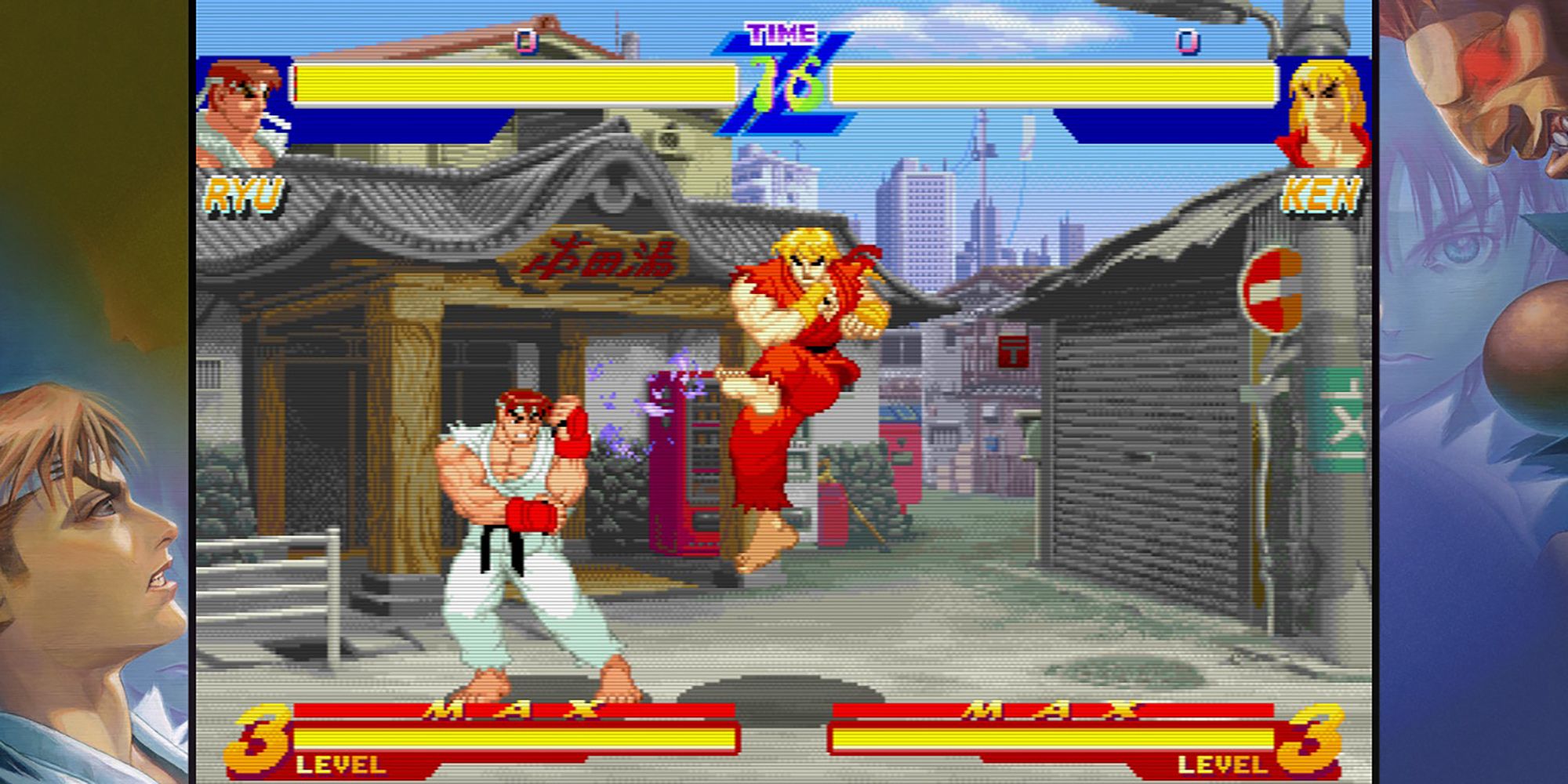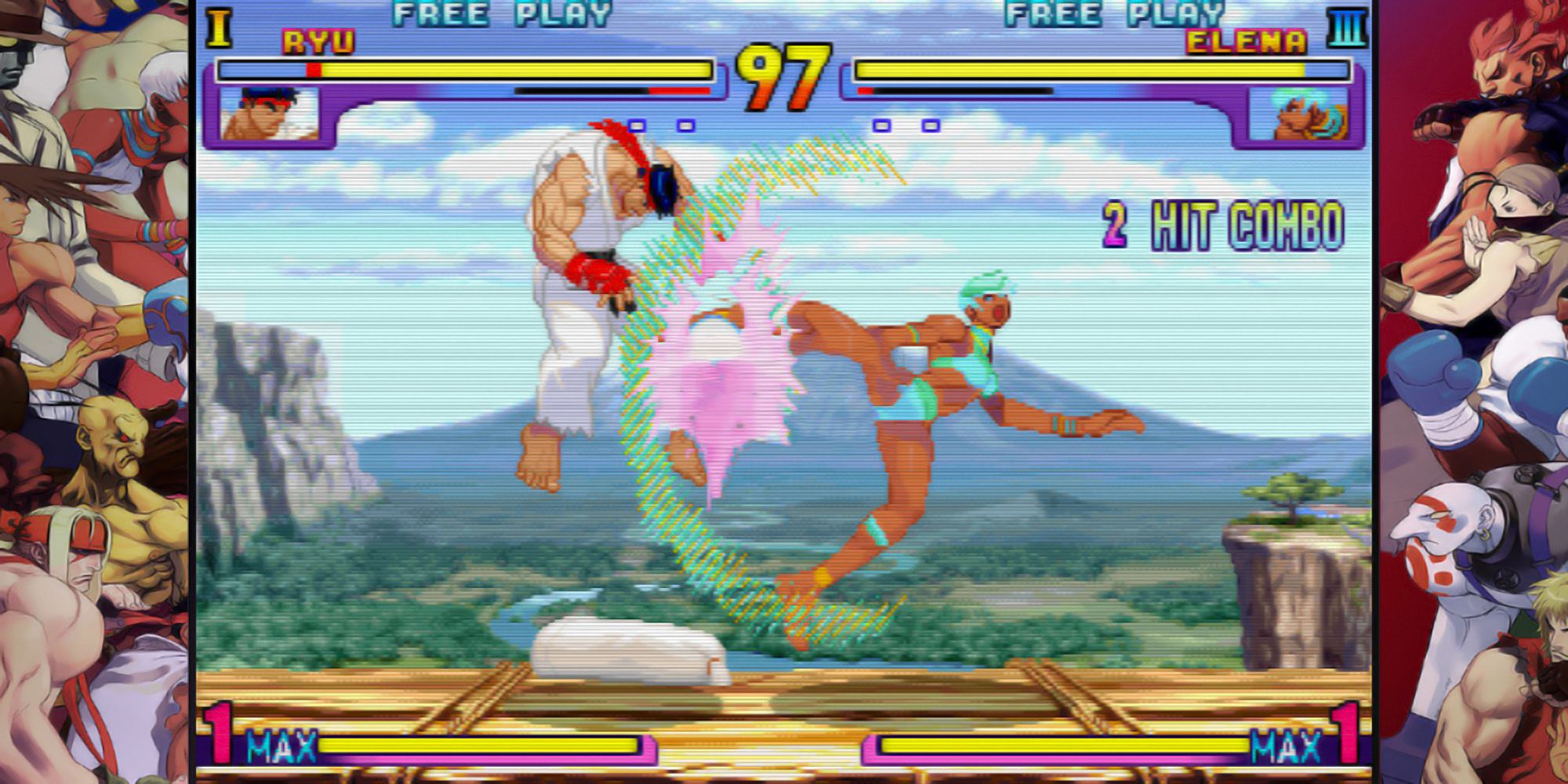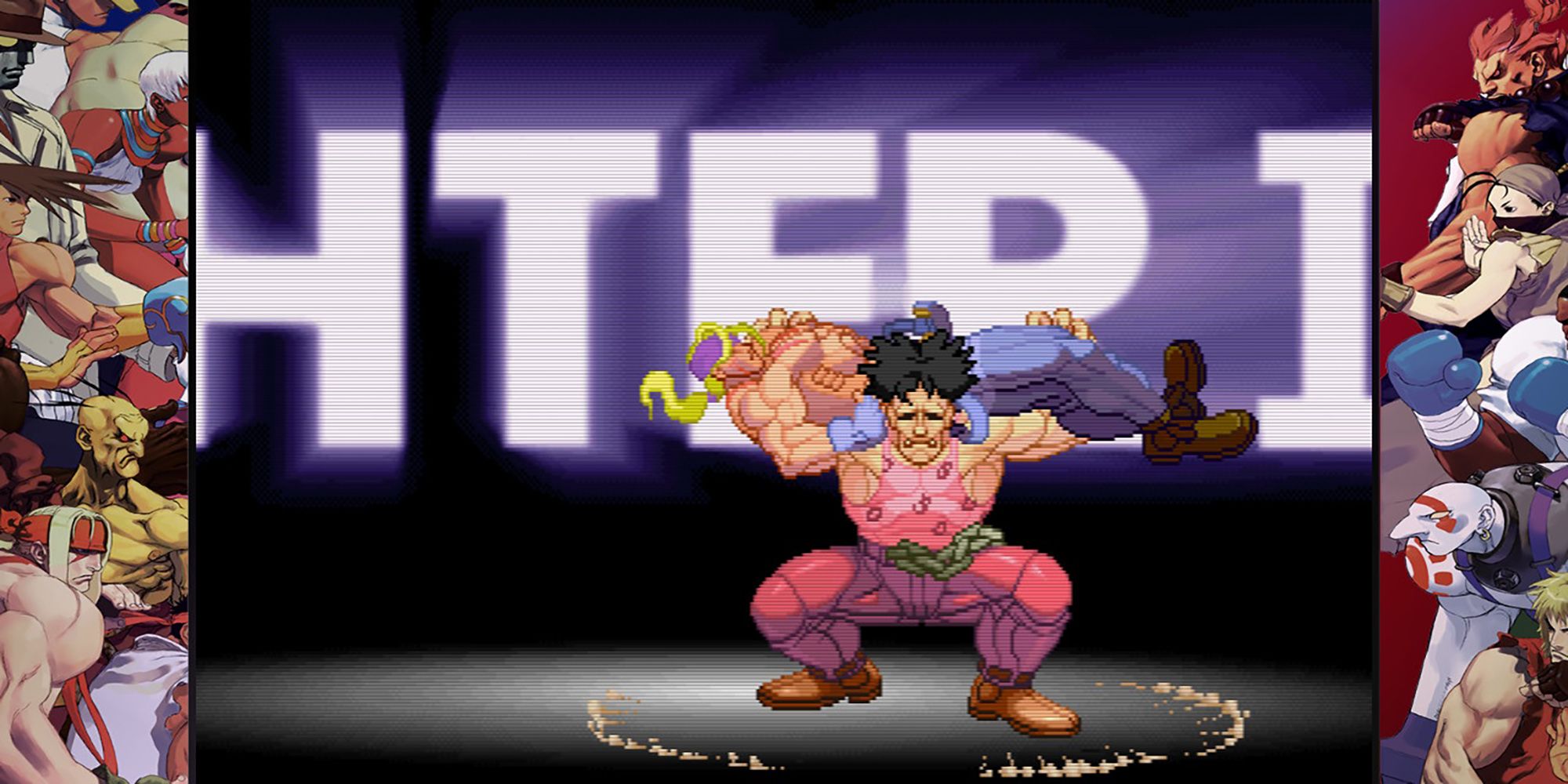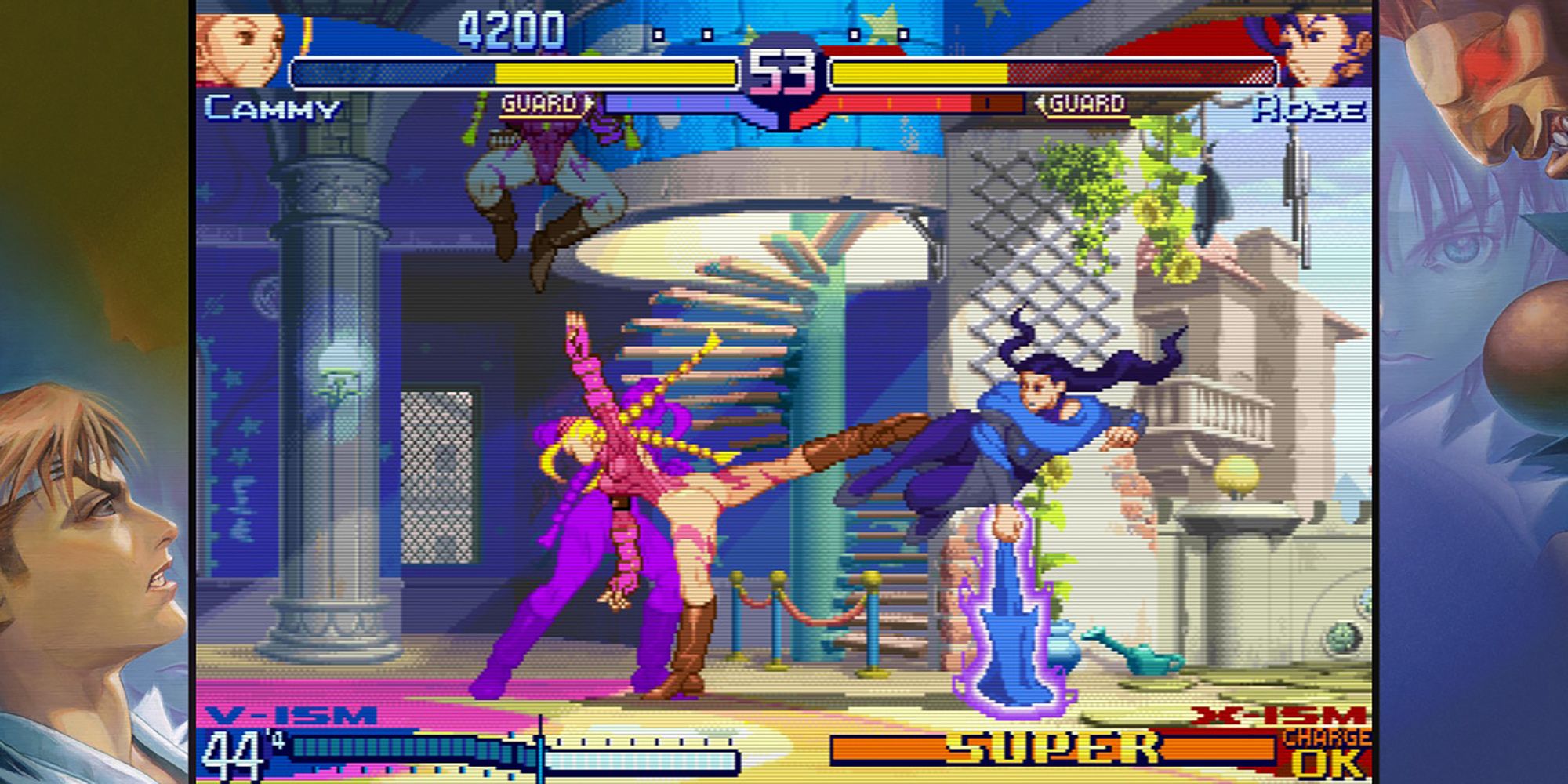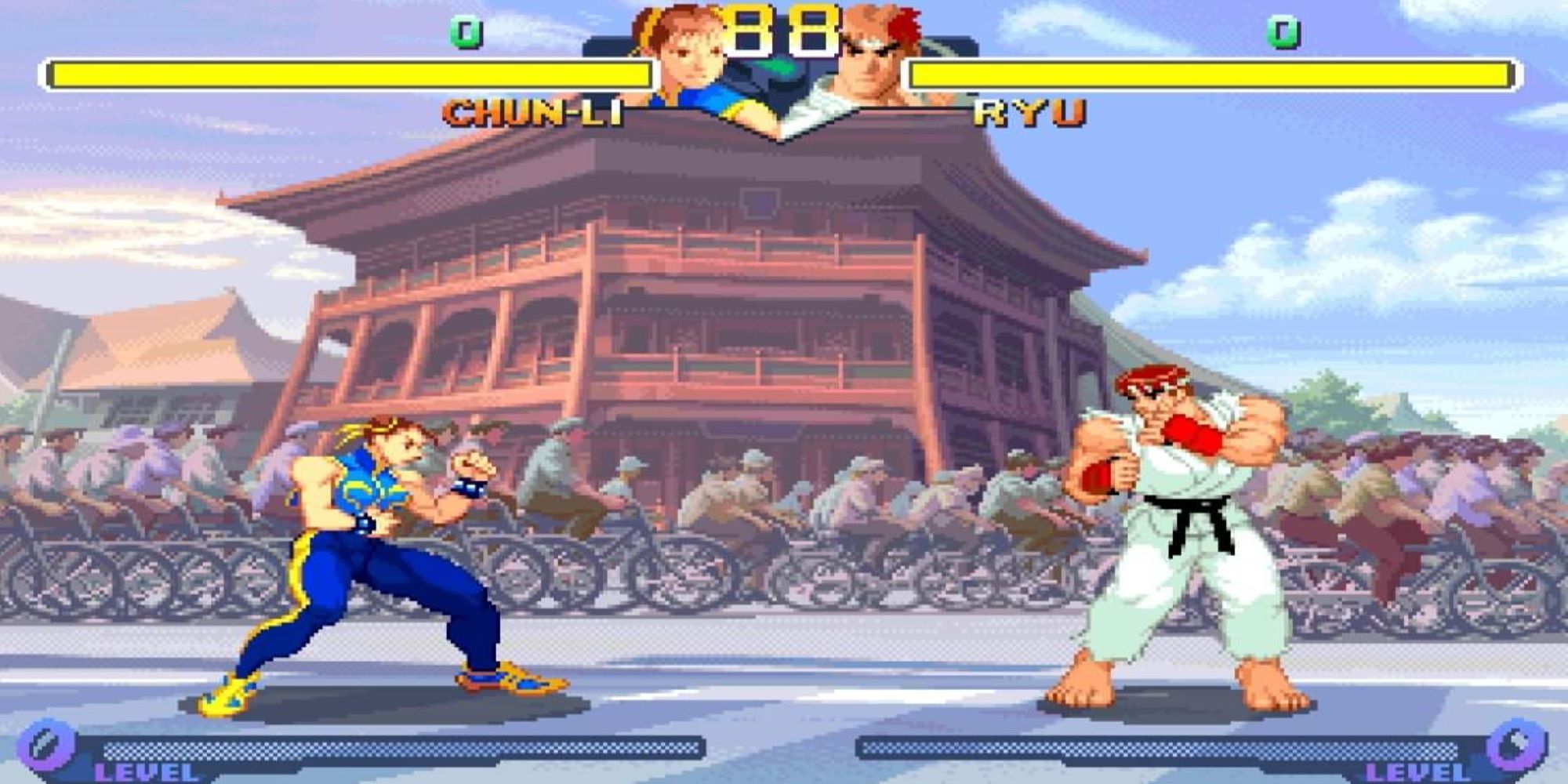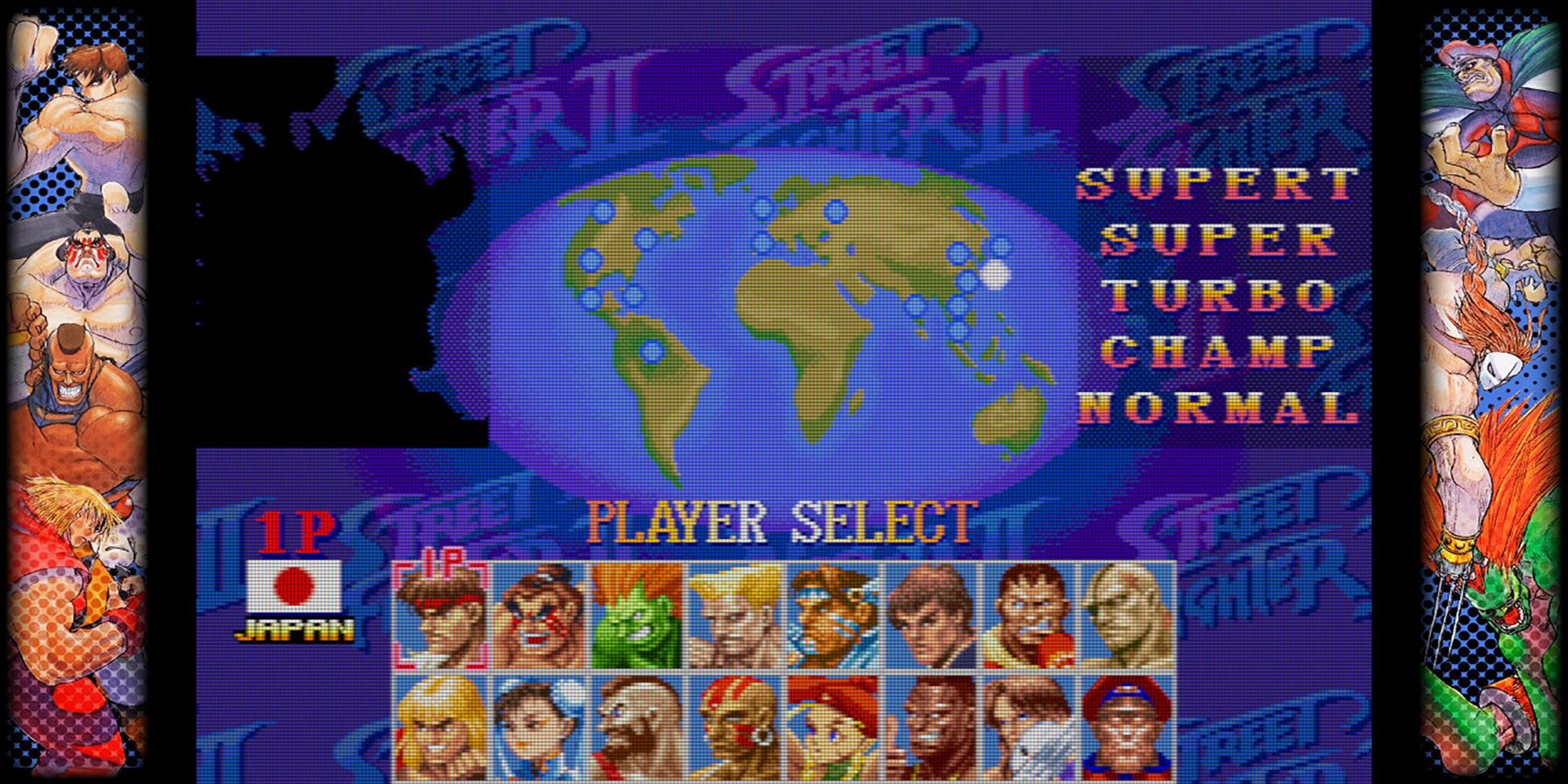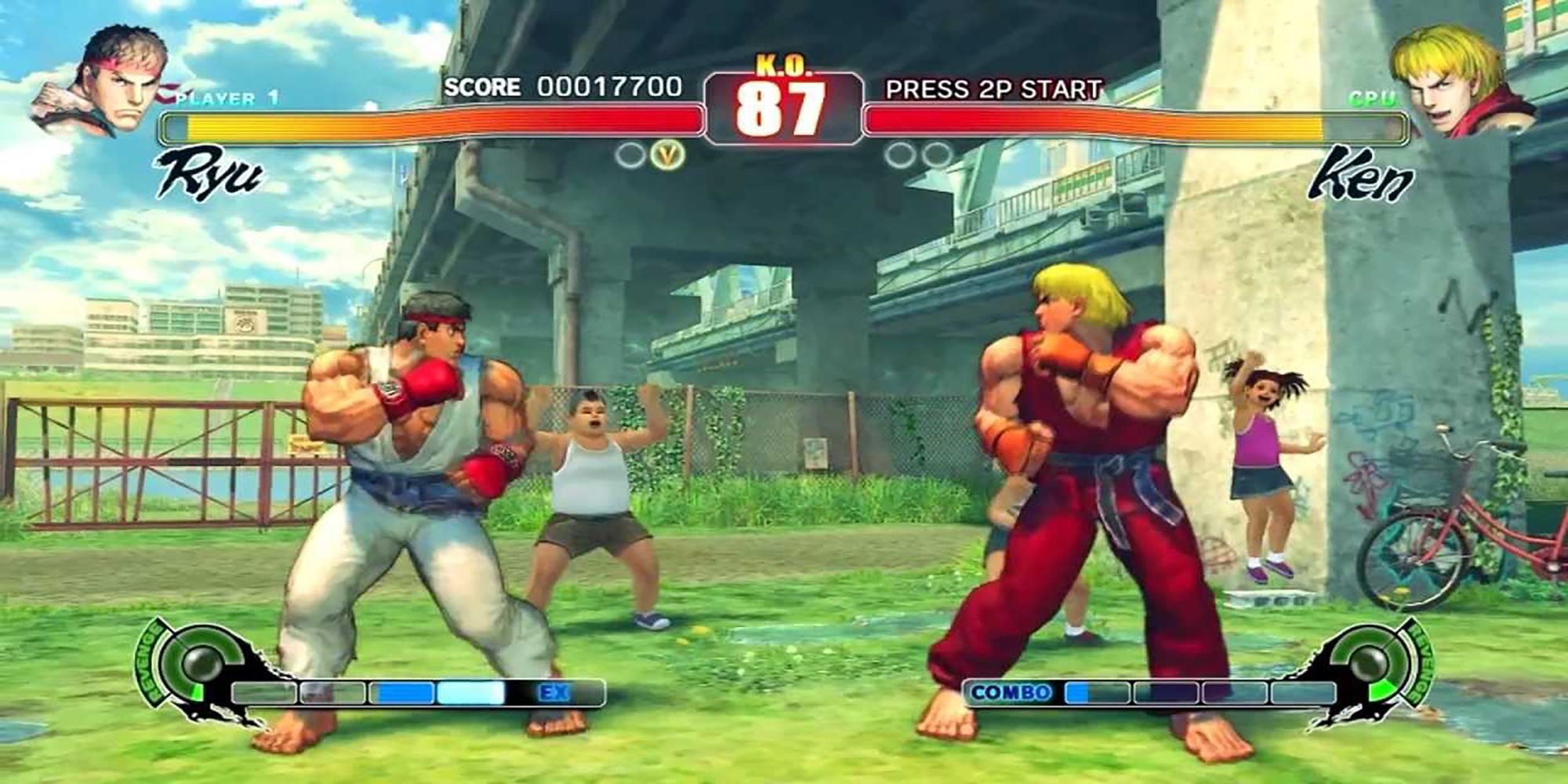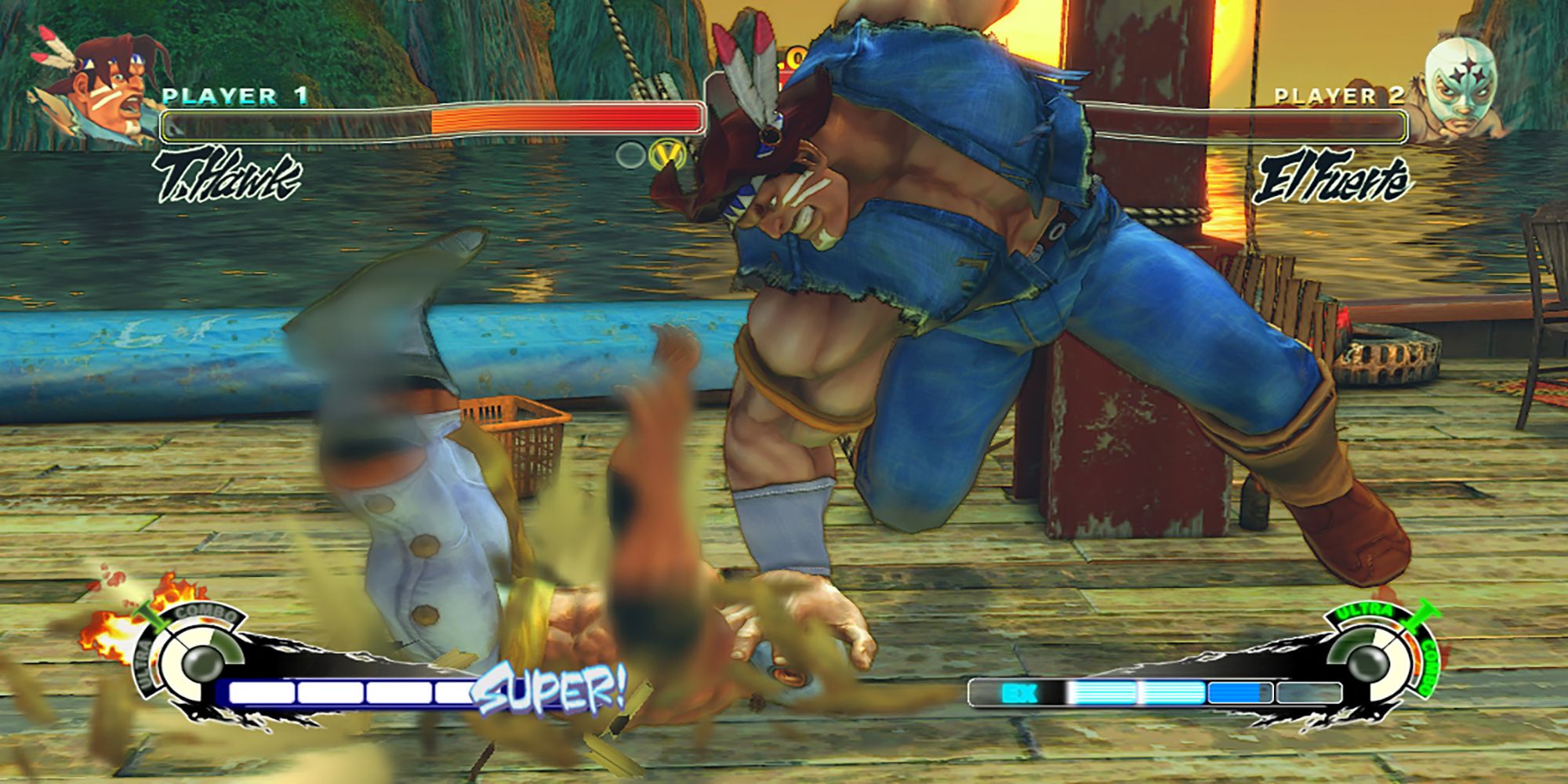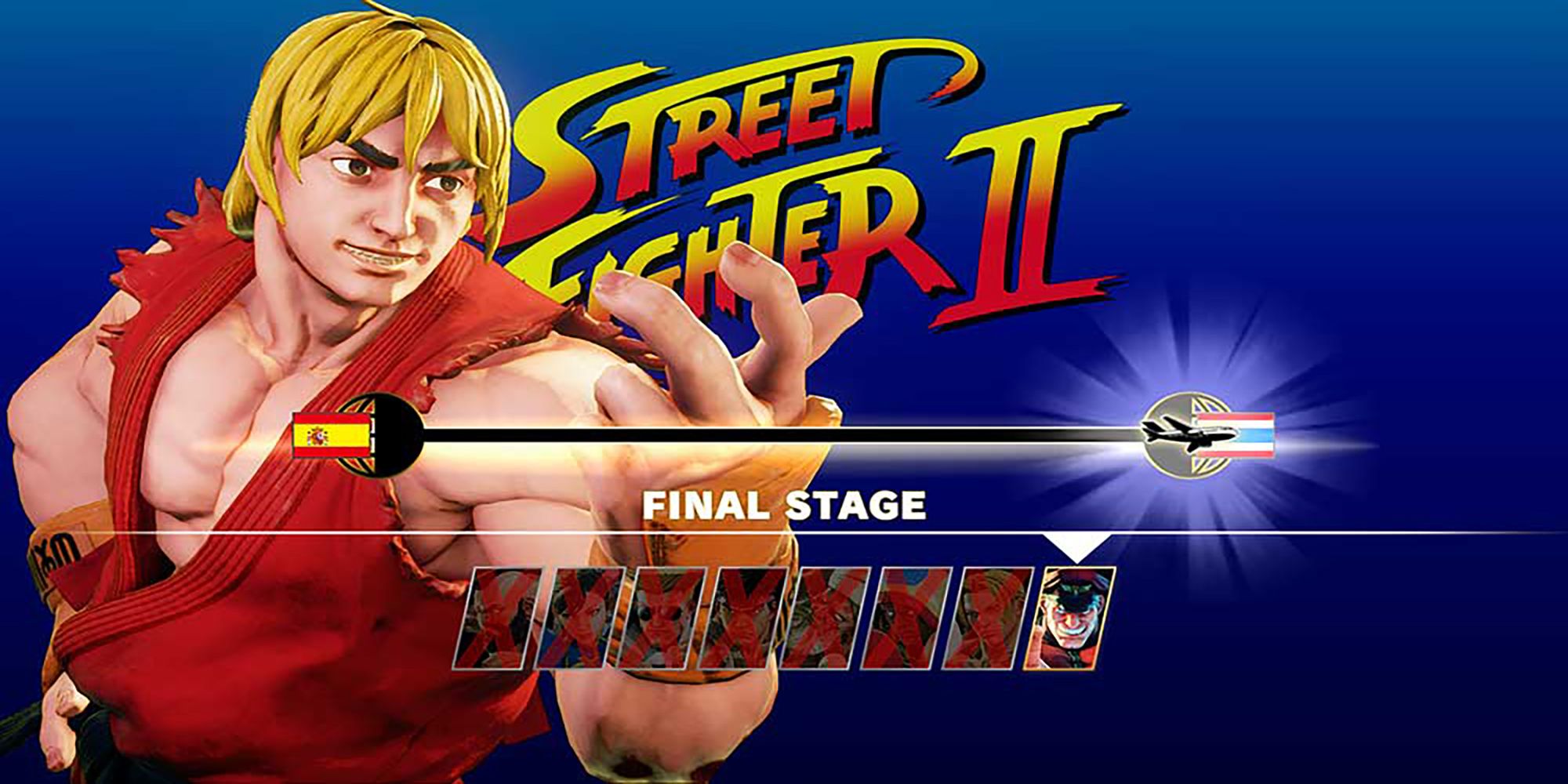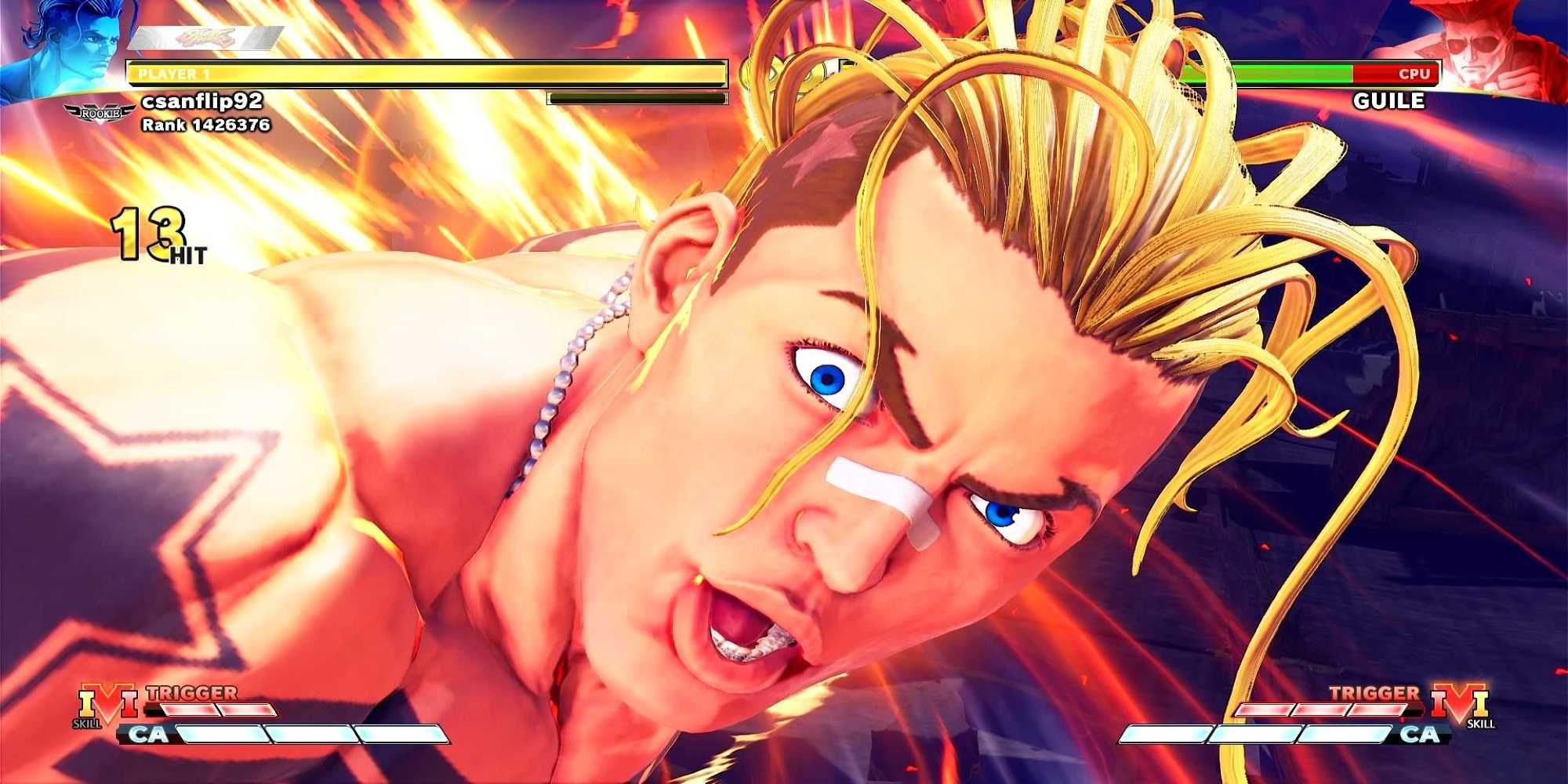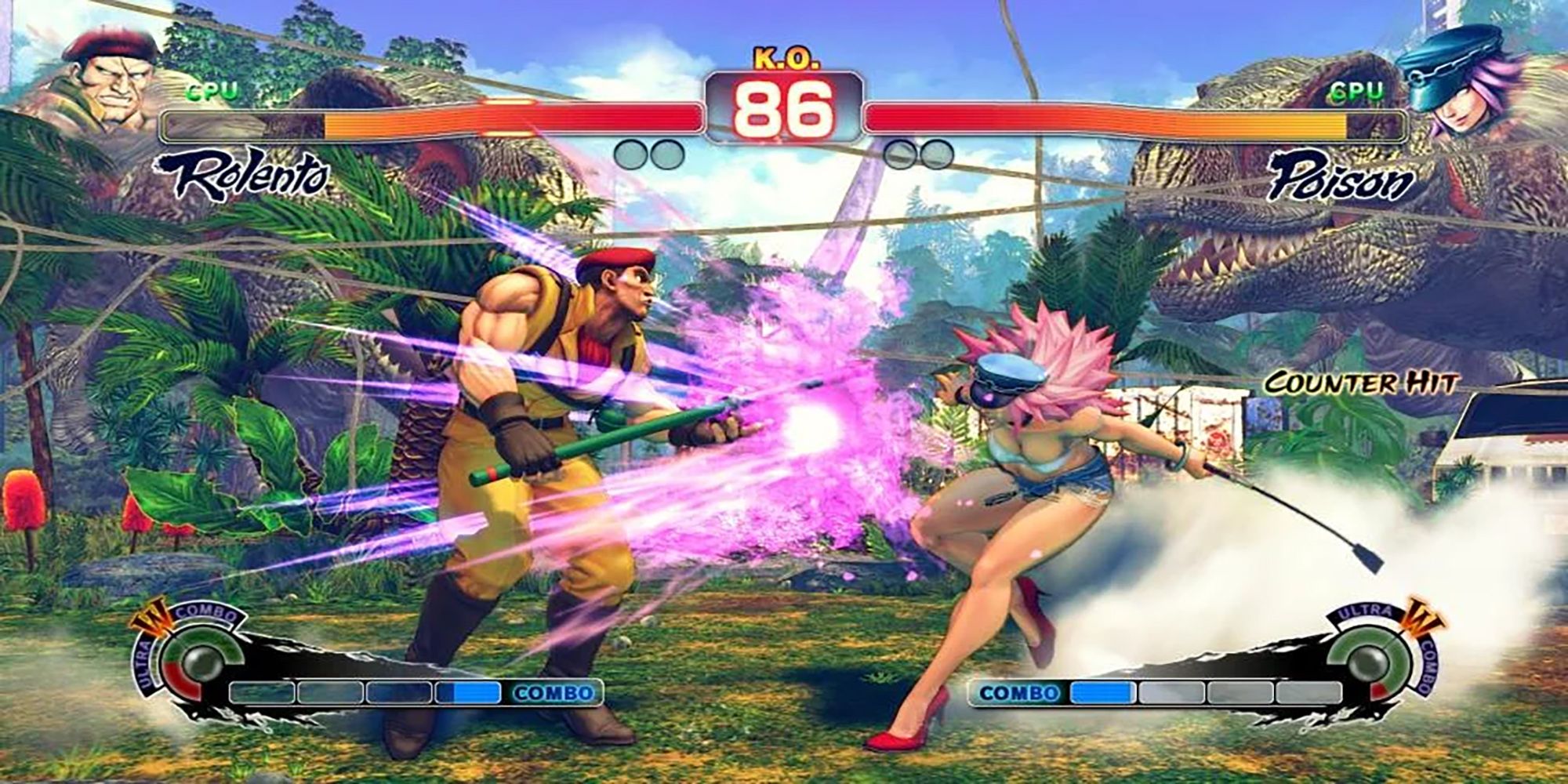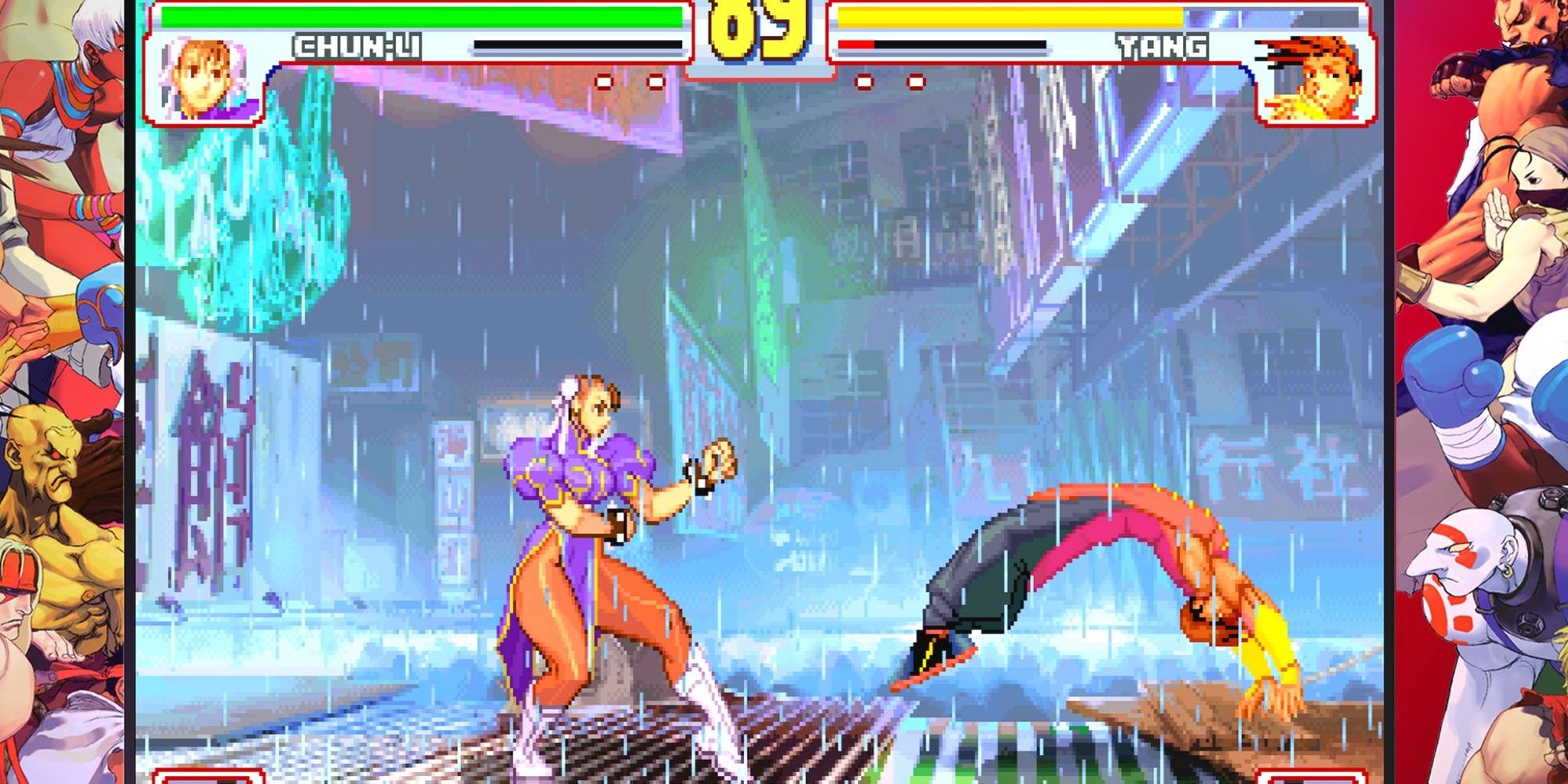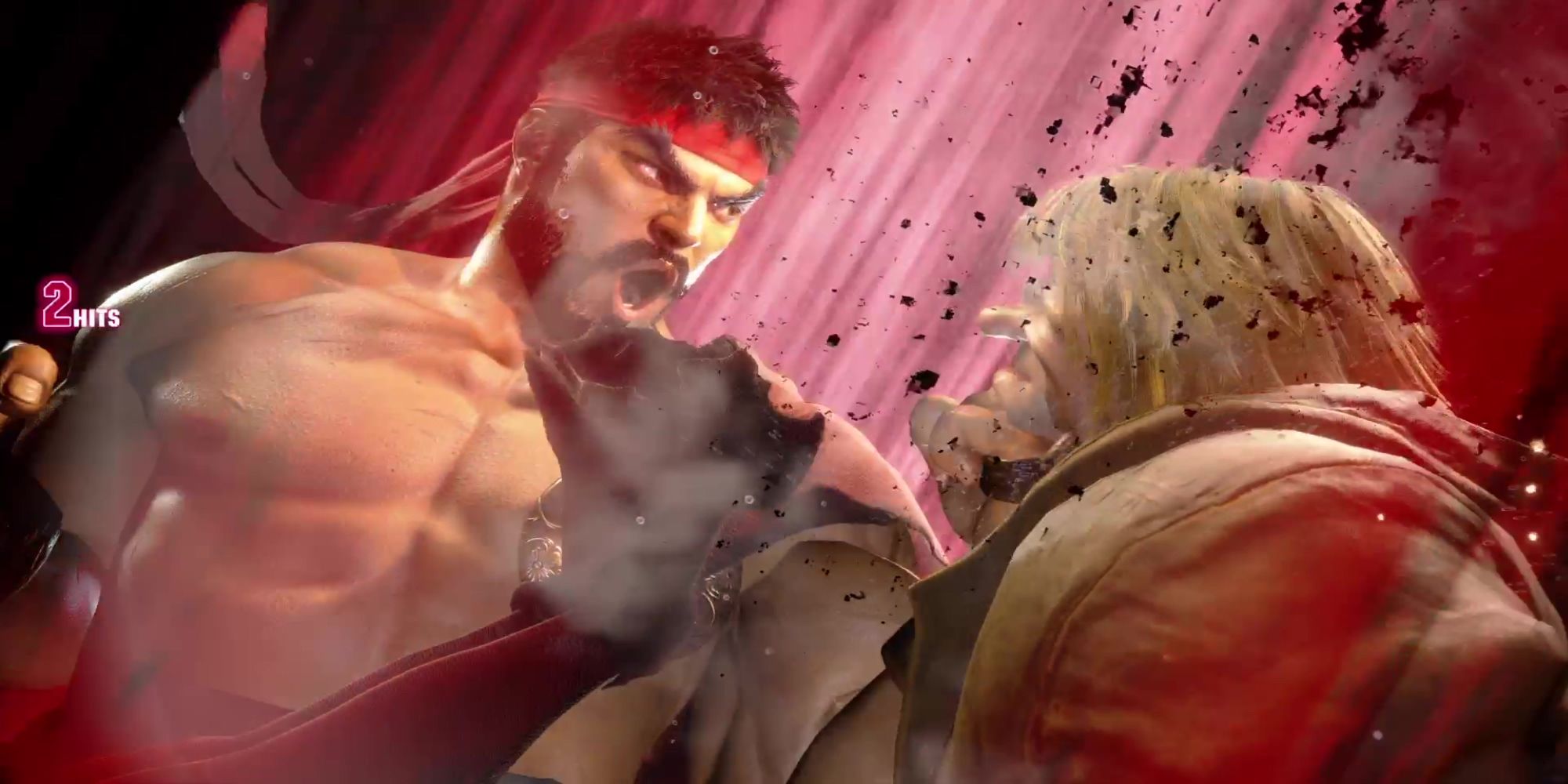Highlights
- Street Fighter 2: The World Warriors changed VS Fighting games forever with its introduction of multiple playable characters and attack combos.
- Street Fighter 3: New Generation was divisive at the time but is now recognized as revolutionary for its stunning sprite work and introduction of important mechanics.
- Street Fighter 6 is considered the best Street Fighter game of the 21st century, with its online Battle Hub, approachable features, and deep gameplay encouraging innovation and replayability.
Regarding 2D fighting games, one series stands a Tiger Uppercut above the rest. Of course, we're talking about Street Fighter. Since 1987, Capcom has launched over twenty games following Ryu and Ken's martial arts journeys. And that excludes over a dozen spin-offs and crossover titles!
One may argue that Street Fighter is a sparse series with only six mainline entries in the past thirty-plus years. However, many updates/re-launches showcase the series' progression, with all its ups and downs. We ranked each entry so you can decide which ones are worth playing!
21 Street Fighter 1
The first Street Fighter game is not memorable compared to its pivotal sequel. We can understand why. Although the game introduced several signature mechanics, like the famous six-button control scheme, its wonky gameplay stands out to modern-day gamers.
Street Fighter 1's shortcomings are abundant. The movement feels clunky, special move inputs are too rigid, and the difficulty curve spikes quickly. Still, SF1 was one-of-a-kind for its time. And its commercial success paved the way for Street Fighter 2, which changed video games forever.
20 Street Fighter 2: The World Warriors
Street Fighter 2: The World Warriors is one of the most culturally impactful video games ever. It's partly responsible for the arcade boom of the early 90s. Plus, it changed VS Fighting games forever by introducing multiple playable characters and attack combos.
Still, vanilla Street Fighter 2 had several improvements ahead of it before the title reached its ultimate form. So, compared to the rest of Street Fighter's catalog, this game falls lower in our rankings.
19 Street Fighter 2': Champion Edition
The original Street Fighter 2 had a playable roster of eight characters. But the arcade ladder concluded with four bosses: Vega, Balrog, Sagat, and M. Bison. These four masters became playable in the updated Street Fighter 2': Champion Edition.
Another significant improvement Champion Edition made was the addition of mirror matches. Now, you and a friend could fight each other as the same character, albeit with different colored costumes.
18 Super Street Fighter 2: The New Challengers
Super Street Fighter 2 was a significant step forward for the series in some ways and a step back in others. The game's strong points were enhanced graphics, a new scoring system, and four new characters.
The update fell short in one impactful area: speed. SuperSF2 decreased the new battle pace introduced in Hyper Fighting. This was a disappointing choice to many fans who became accustomed to Hyper Fighting's unpredictable and spontaneous gameplay.
17 Street Fighter 2': Hyper Fighting
Competition inspires innovation, even if that competition is illegal. For instance, a bootlegged version of SF2, unofficially titled Rainbow Edition, gained popularity with fans due mainly to its faster match speeds.
Capcom picked up on this trend and debuted Street Fighter 2': Hyper Fighting to pick up the pace of battle. The result was a more dynamic and intuitive game that fans still regard as one of the best versions of SF2.
16 Street Fighter 5
Capcom fumbled the ball with Street Fighter in the years following SF4's launch. The DLC scandal behind Street Fighter X Tekken was one significant failure. Street Fighter 5's sparse debut further compounded the company's stingy reputation.
As a fighting game, SF5 is solid. The new V system added unique variations to the game's playable roster. Unfortunately, a small starting roster, bare-bones story mode, and a lack of essential single-player content (arcade mode was a noticeable absence) left fans severely underwhelmed.
15 Ultra Street Fighter 2: The Final Challengers
Ultra Street Fighter 2: The Final Challengers is a brilliant and confusing entry in the Street Fighter 2 sub-series. The game offers fantastic quality-of-life updates, including remastered HD graphics (ported from Super Street Fighter 2 Turbo: HD Remix), a beginner-friendly touch-control scheme, and three new characters.
Yet, the game also has a handful of quirks, most prominently its Nintendo Switch exclusivity. Capcom tried to capitalize on Ultra SF2's Switch exclusive status with several new modes, the least successful being The Way Of The Hado, a shoddy JoyCon action minigame.
14 Street Fighter Alpha
Between Street Fighter 2 and 3, Capcom revisited the World Warriors' past in Street Fighter Alpha. This series explores events between Street Fighter 1 and 2. It also integrates Final Fight into the Street Fighter universe.
The Alpha series significantly impacted Street Fighter's tone and art style for many years. Alpha 1's most apparent gameplay change was its three-tiered super combo meter, which expanded upon the system introduced in SSF2T.
13 Street Fighter 3: New Generation
Street Fighter 3 was a divisive sub-series in Street Fighter history. When the first edition, Street Fighter 3: New Generation, launched, fans were disappointed by the lack of returning characters, and critics felt Street Fighter 3 should have made the jump to 3D graphics.
In hindsight, it's clear how revolutionary Street Fighter 3 was for its time. The sprite work is some of the most gorgeous in gaming history. Plus, several important mechanics debuted in this title, including parries, dashes, super jumps, and recoveries.
12 Street Fighter 3: 2nd Impact
While the original SF3 laid the new series' foundation, Street Fighter 3: 2nd Impact added several vital components that led the way to Third Strike. EX Moves allowed you to perform enhanced special moves in exchange for Super Art meter. Plus, you could use Tech Throws to escape opponent throws.
2nd Impact also made broader improvements that any Street Fighter 2 fan would love. Akuma joined the roster as a hidden character. Plus, bonus stages returned in arcade mode, including the challenging "Parry The Ball" minigame. 2nd Impact is also responsible for introducing Hugo and Urien into the series.
11 Street Fighter Alpha 3
Street Fighter Alpha 3 is a divisive title in the Alpha series. The division among fans is a result of the ISM system. ISMs give you a choice between three fighting styles: A-ISM (classic Alpha gameplay), X-ISM (Street Fighter 2 style gameplay), and V-ISM (a Custom Combo driven style).
As one would guess, V-ISM opened the possibilities for game-breaking infinite combos, resulting in a less balanced title. Despite this, the game has a massive following in Japan, where it still gets played competitively.
10 Street Fighter Alpha 2
Street Fighter Alpha 2 is a fan-favorite and arguably the best game in the Alpha series. The game includes several mechanics from its predecessor, like the three-tier super combo system and alpha counters.
Alpha 2's feature innovation is its custom combo system. This mechanic lets you exchange super meter to chain together normal and special moves with no space between them! The game also introduced Sakura, one of Street Fighter's most popular characters.
9 Hyper Street Fighter 2: The Anniversary Edition
Have you ever wondered if Super Street Fighter 2 Ryu could beat vanilla Street Fighter 2 in a fight? In that case, you can fulfill your curiosity with the delightfully experimental Hyper Street Fighter 2: The Anniversary Edition.
Hyper Street Fighter 2 allows you to choose every version of every character throughout Street Fighter 2's five main versions. You'll get a tactile feeling of how SF2 evolved from 1991 to 1994, making it a must-play for video game history enthusiasts!
8 Street Fighter 4
Street Fighter 4 is a crucial game in the series and an essential moment in fighting game history. An over-saturation of 2D fighting games and a rise in dominance of 3D graphics in the early 2000s made Street Fighter's future look bleak. Fortunately, the series returned to the scene better than ever with its fourth installment!
Taking place between Street Fighter 2 and 3, Street Fighter 4 sought to course-correct issues that turned casual fans off of Street Fighter 3. All eight world warriors from SF2, and its four bosses, returned to the roster. In addition, Street Fighter 4 used 3D graphics while maintaining the series' 2D gameplay.
7 Super Street Fighter 4
Super Street Fighter 4 expanded on its predecessor with even more content. The game added new online modes, new stages, a new announcer, and ten new characters, including Juri (a fan-favorite). Furthermore, Super Street Fighter 4 gave each character two Ultra Combos to choose from.
SSF4: Arcade Edition and SSF4 2012, two of the game's minor updates, added four more characters and several balance changes. Overall, Super Street Fighter 4 is simply more of a great thing!
6 Street Fighter 5: Arcade Edition
Before Street Fighter 5: Arcade Edition launched in 2018, several additions gave the game more substance. A cinematic story mode debuted six months after SF5's 2016 launch. Plus, two DLC seasons significantly beefed up the game's roster.
But the Arcade Edition update stands out because of, you guessed it, the long-awaited Arcade Mode. More importantly, SF5AE's arcade mode features distinct arcade ladders for each mainline game, all with hand-drawn endings. It's a fantastic mode to catch up on the series' extensive lore!
5 Street Fighter 5: Champion Edition
Street Fighter 5: Champion Edition is SF5 in its finest form. This bundle package includes all the DLC up to season 4 for a reasonable price. Furthermore, the following fifth DLC season has fan-favorite characters, including a crossover appearance from Rival Schools' Akira.
Champion Edition continued to receive support leading up to Street Fighter 6's launch. For instance, a 2022 update added balance changes, new music, and offline game filters! In short, it's the game SF5 should have been back in 2016.
4 Ultra Street Fighter 4
If you want to check out Street Fighter 4, Ultra Street Fighter 4 is the definitive version. The game offers plenty of modes and a giant forty-four-character roster. And you can even choose what version of each character you wish to play, ala Hyper Street Fighter 2.
More importantly, Ultra Street Fighter 4 features significant gameplay updates that deepen its experience. The Ultra Combo Double system allows you to use both Ultra Combos in a match in exchange for nerfed damage. Red Focus Attacks add more invincibility hits. Finally, Delayed Wakeups will help you throw off opponents.
3 Street Fighter 3: Third Strike
It took some time for Street Fighter 3 to gain a reputation among the wider gaming audience. However, the sub-series became a sleeper hit among hardcore fighting game fans. Street Fighter 3: Third Strike is widely considered the crown jewel of SF3.
If you've never played Street Fighter 3, Third Strike is the definitive edition to play. Its mechanics, including the new Guard Parry (aka Red Parry), are incredibly refined. And the nineteen playable characters include series favorites like Chun-li, Makoto, and Q.
2 Street Fighter 6
Suppose you're new to Street Fighter, then Street Fighter 6 is a must-play. We argue it's the best Street Fighter game of the 21st century. The latest installment made several pivotal changes, making an impact unseen since Street Fighter 2's heyday.
Street Fighter 6 accomplishes three tremendous feats. First, its online Battle Hub expertly recreates a 90s arcade environment. Second, features like Modern Controls and World Tour Mode make SF6 the most approachable entry in the series. Lastly, its deep gameplay encourages innovation, creativity, and replayability.

